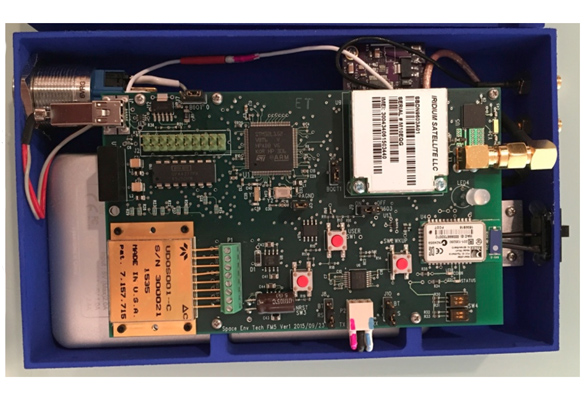Automated Radiation Measurements for Aerospace Safety - High-altitude (ARMAS-Hi)
PI: W Kent Tobiska, Space Environment Technologies (SPACEWX), Leonid Didkovsky (Co-I), University of Southern California
PI: W Kent Tobiska, Space Environment Technologies (SPACEWX), Leonid Didkovsky (Co-I), University of Southern California

- TA06 Human Health, Life Support and Habitation Systems
- TA08 Science Instruments, Observations and Sensor Systems
This project is part of a larger technology advancement plan to develop and validate an operational radiation monitoring capability. There are four altitude domains (LEO, suborbital, high-altitude, and aviation altitude) in which radiation affects human activity and they need to be monitored as a whole system (deep space missions excluded). As human activity in space becomes more common, there is a recognized need to operationally and self-consistently specify and forecast the radiation environment from the ground to LEO in real-time.
The top technical issue to demonstrate is an automated, real-time radiation measurement system using COTS components that can sustain operation in a harsher radiation environment than has previously been experienced with the existing state-of-the-art system. ARMAS-Hi will start at TRL6, where engineering feasibility has been fully demonstrated in aircraft flight. The ~5-minute Level 3 data product is real-time and its production from the balloon flight will validate the system-level at TRL7.
ARMAS-Hi intends to demonstrate a technology that can identify high cancer-risk radiation dose rates from career-limiting Galactic Cosmic Rays (GCR) that are experienced by astronauts, high-altitude pilots, frequent commercial aviation flyers, pregnant mothers, and commercial space travelers. This system is intended to be integrated into global air (and space) traffic management (ATM) as envisioned by other U.S. Government agencies, including FAA’s NextGen air transportation system.
Technology Details
-
Selection DateREDDI-F1-16 (Jul 2016)
-
Program StatusActive
- 1 Balloon
Development Team
-
PIW Kent Tobiska
-
PI Organization
-
Co-ILeonid Didkovsky
-
Co-I Organization
-
SponsorNASA
-
More Information

